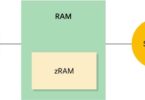It’s no big secret that the online retail market is booming, and it just keeps getting better ever year, However, most booms come with a downside, and that is market saturation. You may make the best widgets or provide the best online service, but how do you differentiate your widget or service from thousands of other similar e-tailers on the Internet?
Part of the answer is search engine optimization, but once you get the traffic to your website, how do you convert it to paying customers? That’s the topic of hundreds of blogs and online courses. They’ll tell you about SEO and landing pages and email campaigns, but there’s one thing that these advisers leave out: creating an intimate, interactive customer experience.
Design Tips to Live and Sell By
Product Choice
The first hurdle is finding the right product. If you already provide a service or sell a specific product in the real world, you already have half of this battle won; you simply need to market it effectively in an online environment. If you’re new to eCommerce, you have to find something that consumers want to buy.
Business is about problem-solving. Your product or service should be reasonably priced, something that can’t be purchased as easily in the customers local area and it should provide a solution that makes the customer think “Wow, I really need that.” However, try to stay away from products that are too trendy, seasonal or obscure.
Drawing Them In
You’ve got the great product, you’ve gone through all the best practices for getting potentials to your website, now you have to make them yours. The firs step is to make your website easy to navigate, simply in its design and provide a high-quality customer experience. Customer interaction is also imperative. Features like live chat, 24-hour customer support and a personalized follow-up email can go a long way toward creating repeat business.
Navigation means providing easy access to links within the website and providing a design that’s functional and intuitive. The pages should be visually dynamic without overwhelming the senses, with either a zoom-in tool or multiple thumbnails so your customers can inspect the merchandise in detail. Descriptions should be concise and let them customer know exactly how purchasing that item will benefit them.
Ideally, there should be an ‘add to cart’ button next to each item in your catalog, and an easy, one-page checkout system that can be updated automatically if a customer adds or removes items. Up-selling by adding suggestions for related items or deals if you purchase two similar items are effective if they don’t come off as a hard-sell.
Even if you know the basics of what you want in an eCommerce website, you don’t have to go through the hassle of designing and building the website yourself. A lot of very good, innovative hosting companies will give you free custom website design as an incentive to sign with their service. Then, you can hire fullstack developers to fulfill the desired design. Since this is a long-term commitment, be sure to find a reputable company that has references you can check and a business philosophy that meshes with yours.






